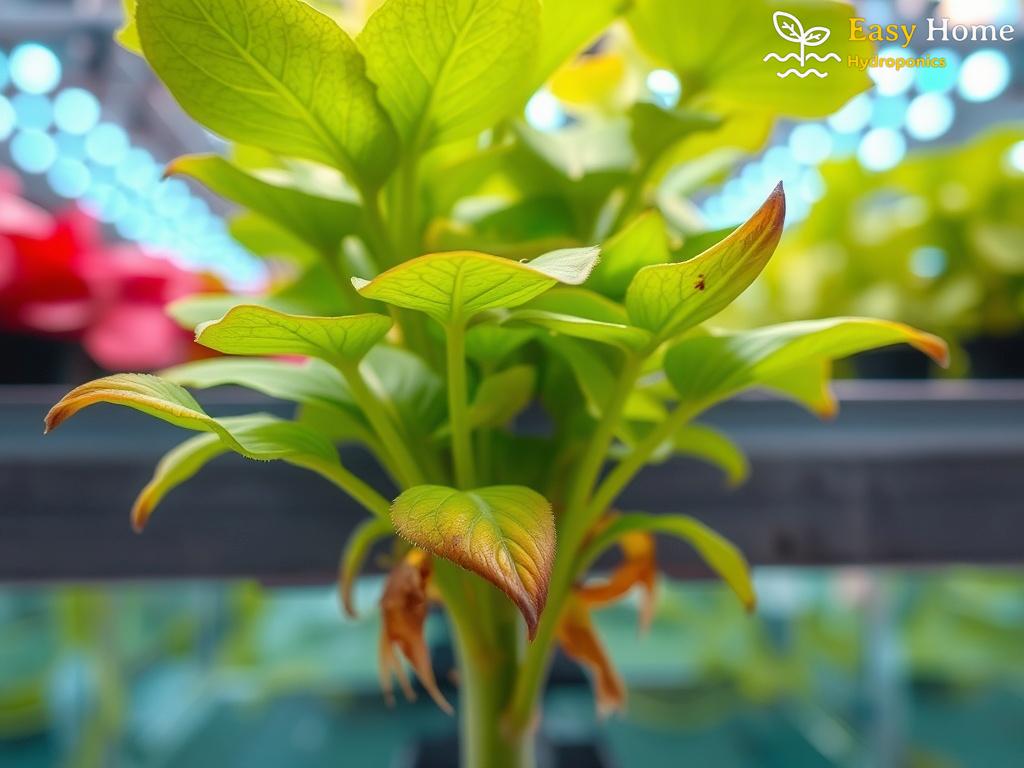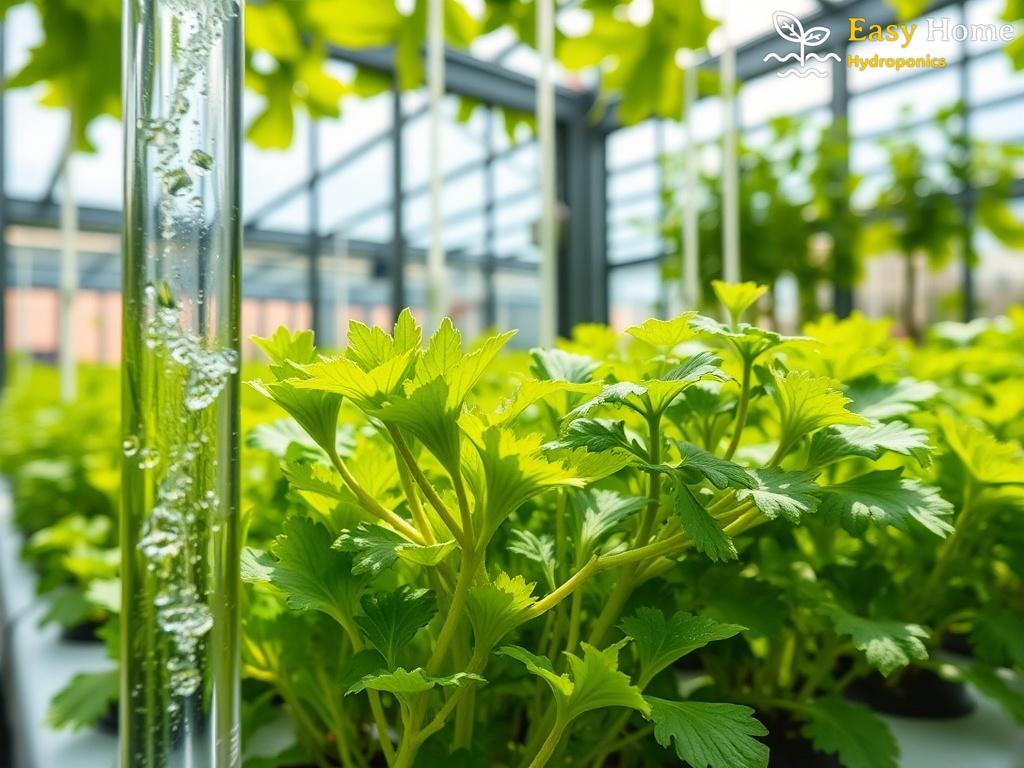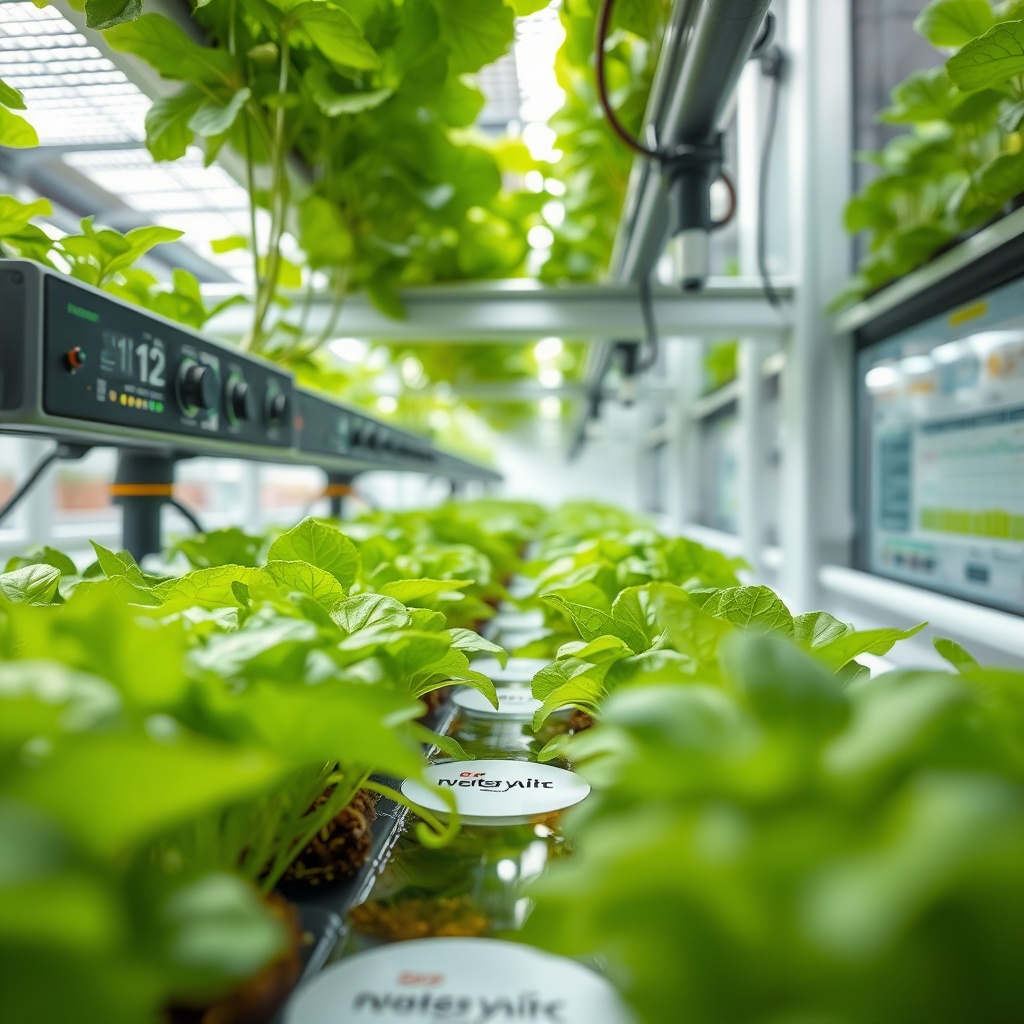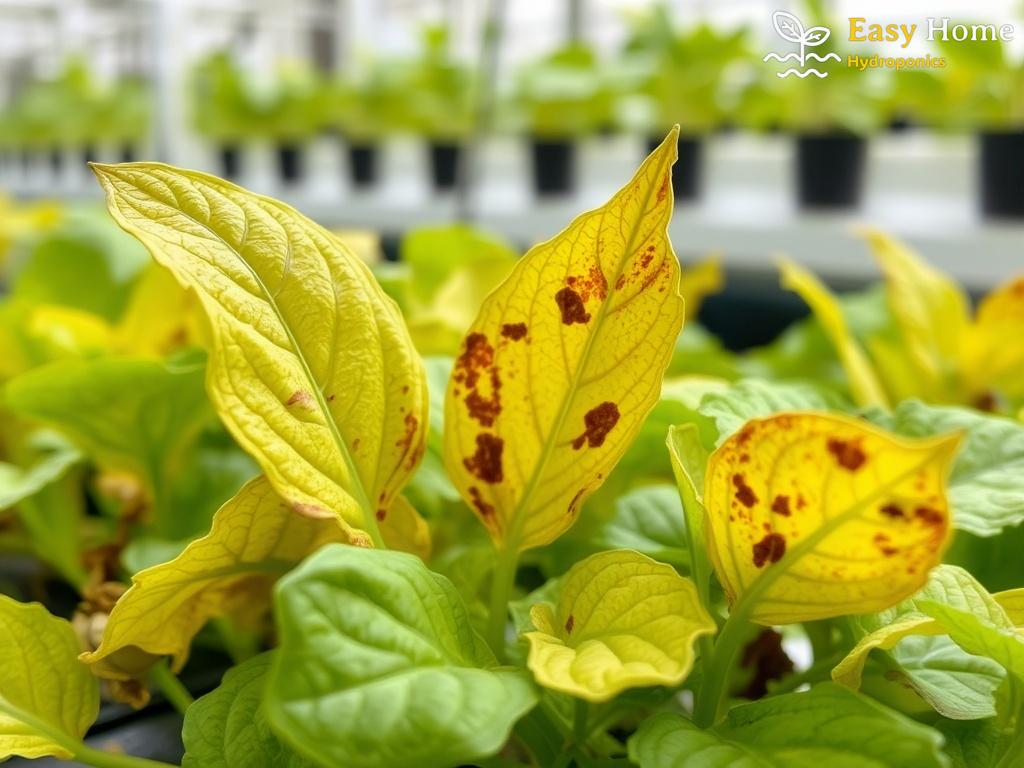Understanding Nutrient Burn: The Silent Threat
Nutrient burn is often an overlooked issue in the world of hydroponics, where the allure of lush, thriving plants can quickly turn into a nightmare of wilting leaves and stunted growth. This phenomenon occurs when plants receive an excess of nutrients, leading to a toxic environment that can hinder their development. Understanding the signs and causes of nutrient burn is essential for any hydroponic gardener aiming for success.
In the realm of hydroponics, recognizing the symptoms of nutrient burn can spell the difference between a flourishing garden and a failed crop. The first signs often manifest as leaf discoloration, typically starting with the tips turning brown or yellow, which can be alarming for any gardener. Here’s a list of common symptoms that indicate your plants might be experiencing nutrient burn:
- Browning or yellowing leaf tips
- Wilting or drooping leaves
- Dark patches or burnt spots on leaves
- Stunted growth or delayed flowering
Understanding these symptoms can help you take immediate action before further damage occurs.
Preventing nutrient burn is crucial for maintaining the health of your hydroponic plants. The key lies in achieving a balanced nutrient solution and monitoring environmental conditions. Here are some effective strategies to consider:
- Regular Monitoring: Check your nutrient levels frequently to ensure they stay within the optimal range.
- pH Balance: Maintain the pH of your nutrient solution between 5.5 and 6.5 to enhance nutrient uptake.
- Gradual Adjustments: When changing nutrient concentrations, do so gradually to avoid shocking the plants.
- Flush Your System: Periodically flushing your system with fresh water can help remove excess salts and prevent buildup.
By implementing these strategies, you can create a thriving hydroponic environment that minimizes the risk of nutrient burn and promotes healthy plant growth.
Signs Your Plants Are Overfed: Spotting Nutrient Burn
In the intricate dance of hydroponic gardening, understanding the needs of your plants is paramount. While providing nutrients is essential for growth, overfeeding can lead to a detrimental condition known as nutrient burn. This phenomenon can be subtle, creeping into your garden unnoticed until it manifests in distressing symptoms. Recognizing these signs early can save your plants from severe damage and ensure a bountiful harvest.
One of the most alarming indicators of overfeeding is the discoloration of leaves. Initially, you may notice a slight yellowing at the tips, which can be easily mistaken for other issues. However, this symptom is often a precursor to more severe manifestations. As nutrient burn progresses, leaves may develop dark patches or even take on a burnt appearance, signaling that your plants are in distress. It’s crucial to be vigilant, as these symptoms can escalate quickly.
Another telltale sign of nutrient burn is wilting or drooping leaves. While wilting can often be attributed to issues like underwatering, in the case of nutrient excess, it is a response to the toxic environment created by excessive nutrient levels. Plants struggling with nutrient burn may also experience stunted growth, where their development is significantly slowed down, leading to delayed flowering or fruiting. This stagnation can be frustrating for any gardener, as it represents lost potential.
In addition to recognizing the visible signs of nutrient burn, it’s essential to understand the role of pH levels in nutrient uptake. When the pH of the nutrient solution strays outside the optimal range, it can lead to nutrient lockout, where plants cannot absorb the essential elements they need for healthy growth. This can exacerbate the symptoms of nutrient burn, creating a vicious cycle of stress for your plants. Maintaining a balanced pH level between 5.5 and 6.5 is critical to ensuring that your plants can utilize the nutrients provided effectively.
To manage the health of your hydroponic system, consider keeping a detailed journal of nutrient levels, pH readings, and plant responses. This practice can help you identify trends and adjust your feeding practices accordingly. By fostering a proactive approach, you can ensure that your plants receive the appropriate nutrients without risking the devastating effects of nutrient burn.
The Perfect Balance: Crafting the Ideal Nutrient Solution
Creating the perfect nutrient solution is akin to composing a symphony; every element must harmonize to encourage the vibrant growth of your hydroponic plants. Achieving this balance is essential not only for promoting healthy foliage and fruits but also for safeguarding against the silent threat of nutrient burn. Here, we delve into the components that play a pivotal role in crafting an ideal nutrient solution, ensuring your plants thrive in a well-balanced environment.
In hydroponics, the nutrient solution is a cocktail of essential elements that plants require to flourish. Understanding the role of each component helps you prepare a concoction that meets your plants’ specific needs. Here’s a breakdown of the key nutrient categories:
- Macronutrients: These are the primary nutrients that plants require in larger quantities. They include Nitrogen (N), Phosphorus (P), and Potassium (K)—commonly referred to as NPK. Each plays a unique role in growth, from promoting lush foliage to enhancing root development.
- Secondary Nutrients: Calcium (Ca), Magnesium (Mg), and Sulfur (S) fall into this category. They support various physiological functions such as enzyme activity, chlorophyll production, and overall plant vigor.
- Micronutrients: Though needed in small amounts, elements like Iron (Fe), Manganese (Mn), and Zinc (Zn) are crucial for plant health. They participate in vital processes like photosynthesis and nutrient uptake.
While nutrient composition is vital, the pH level of your nutrient solution is the unsung hero that often dictates plant health. Maintaining a pH range of 5.5 to 6.5 is critical for optimal nutrient absorption. Deviations from this range can lead to nutrient lockout or, worse, exacerbate the symptoms of nutrient burn. Regular testing and adjustments are necessary to keep your solution within this sweet spot. Utilizing quality pH meters and calibration solutions will ensure accuracy in your readings.
Crafting the ideal nutrient solution is not a one-size-fits-all approach. It requires careful consideration of plant types, growth stages, and environmental conditions. To help you in this endeavor, here’s a simple step-by-step guide:
- Identify Plant Requirements: Research the specific nutrient needs of the plants you’re growing. Different species have different requirements.
- Choose Quality Nutrients: Invest in reputable nutrient products that offer a balanced range of macro and micronutrients.
- Mix to Perfection: Follow the manufacturer’s recommendations for mixing your nutrient solution, ensuring that you’re not over-concentrating any component.
- Test and Adjust: Use a pH meter to check the pH level of your solution and adjust as necessary using pH up or down solutions.
- Monitor and Observe: Keep a close eye on your plants for any signs of nutrient deficiencies or excesses, and be prepared to tweak your solution accordingly.
By following these steps, you can create a nutrient solution tailored to your hydroponic garden’s unique needs, fostering a flourishing ecosystem while preventing the dreaded nutrient burn.
Water Quality Matters: Preventing Nutrient Imbalances
In the intricate web of hydroponic gardening, the quality of water often takes a backseat to nutrient solutions. However, the truth is that water quality plays a pivotal role in preventing nutrient burn and maintaining a thriving ecosystem. Ensuring that your water is free from contaminants and possesses the right characteristics can drastically enhance nutrient absorption and protect your plants from the detrimental effects of imbalances.
Water is not just a medium; it is a lifeline for your plants. The purity and composition of the water used in hydroponics can significantly influence how nutrients are absorbed. Contaminants such as chlorine, heavy metals, and excessive minerals can lead to adverse reactions in plants, inhibiting their ability to efficiently absorb the nutrients they need. When the water quality is compromised, it can create an environment ripe for nutrient burn, where plants struggle to manage excess nutrients effectively.
To craft an effective nutrient solution, one must start with quality water. Below are the key characteristics that define good water for hydroponic systems:
- pH Level: Ideally, the pH should be within the range of 5.5 to 6.5 to facilitate optimal nutrient absorption.
- Electrical Conductivity (EC): This measures the water’s ability to conduct electricity, indicating the concentration of dissolved salts and nutrients. An EC range of 1.5 to 2.5 mS/cm is generally favorable.
- TDS (Total Dissolved Solids): Keeping TDS levels below 500 ppm helps prevent toxic buildup of minerals that can lead to nutrient burn.
- Temperature: Water temperature should be maintained between 18°C and 22°C (64°F to 72°F) for optimal root function.
To safeguard against nutrient imbalances, consider implementing the following strategies for maintaining high water quality:
- Regular Testing: Invest in quality water testing kits to monitor pH, EC, and TDS levels. Frequent checks will allow you to catch any deviations early.
- Filtration Systems: Use reverse osmosis or carbon filters to remove contaminants and achieve pure water that is free from harmful substances.
- Water Source Awareness: Understand the source of your water. Municipal sources often contain chlorine or chloramine, which can be detrimental to your plants.
- Temperature Control: Use water chillers or heaters to maintain desired temperatures, ensuring that your plants remain comfortable and nutrient uptake remains efficient.
By prioritizing water quality, hydroponic gardeners can create a robust foundation for nutrient absorption, ultimately reducing the risk of nutrient burn and fostering healthy, vibrant plants. Remember, the journey to a successful harvest starts with the water you provide!
Adjusting pH Levels: A Key to Nutrient Absorption
The intricate balance of nutrients in hydroponic systems can be easily disrupted by one vital factor: pH levels. Maintaining the ideal pH range is not merely a matter of preference; it is a critical component that influences nutrient availability and plant health. Hydroponic gardeners must understand that slight deviations in pH can lead to detrimental consequences, including nutrient burn. Thus, the quest for the perfect pH level is essential for nurturing thriving plants.
To grasp the importance of pH, it’s essential to recognize that plants absorb nutrients in their ionic forms. Each nutrient is most bioavailable within a specific pH range. For most hydroponic plants, the sweet spot lies between 5.5 and 6.5. When pH levels stray outside this range, nutrient uptake becomes compromised. This can lead to a phenomenon known as nutrient lockout, where plants struggle to absorb the very nutrients they need for optimal growth, leading to an increase in nutrient concentration in the solution and ultimately causing nutrient burn.
Understanding how pH affects nutrient dynamics can empower hydroponic gardeners to make informed adjustments. Nutrients such as nitrogen, phosphorus, and potassium are particularly sensitive to pH changes. For instance, in a highly acidic solution (pH below 5.0), essential nutrients like calcium and magnesium become less available, while at alkaline levels (above 7.0), other nutrients like iron and manganese may become locked out.
This imbalance can create a cascade of issues, where plants may exhibit symptoms of deficiency even when nutrients are present in the solution. The irony lies in the fact that over-fertilization often occurs as a misguided attempt to compensate for these deficiencies, further exacerbating the risk of nutrient burn. Therefore, regularly monitoring and adjusting pH levels is integral to maintaining nutrient equilibrium.
To ensure that your hydroponic garden remains in the optimal pH range, several strategies can be employed. First and foremost, invest in a reliable pH meter. Regular testing will provide critical insights into the health of your nutrient solution. When fluctuations occur, the use of pH up or down solutions can help bring levels back to the desired range.
Consider also the source of your water, as municipal supplies often contain chlorine or other chemicals that can affect pH levels. Using filtration systems, such as reverse osmosis, not only purifies the water but also allows for better control of nutrient concentrations. Additionally, it’s important to introduce nutrients gradually to avoid shocking your plants and causing pH swings.
By mastering the art of pH management, hydroponic gardeners can create a stable environment conducive to nutrient absorption. This proactive approach not only prevents nutrient burn but also paves the way for robust plant growth and bountiful harvests.




